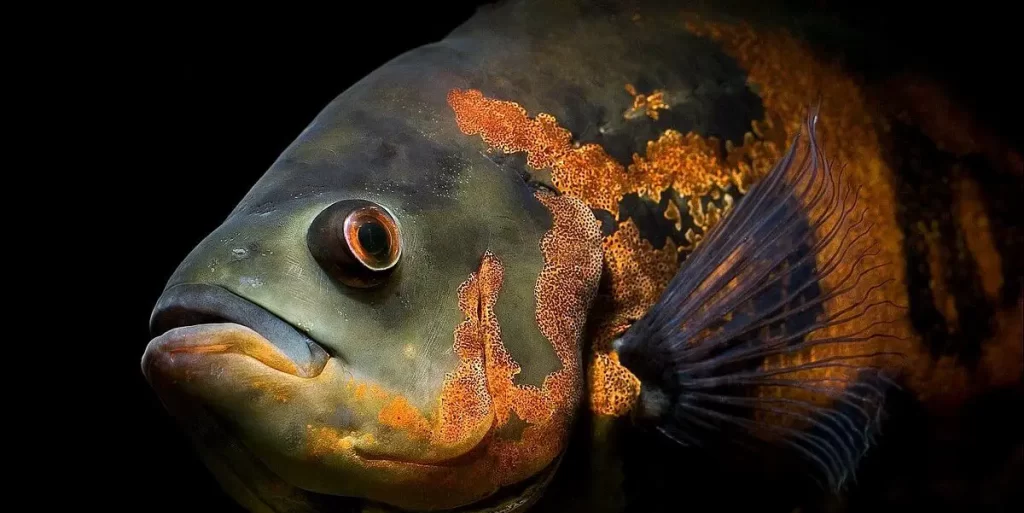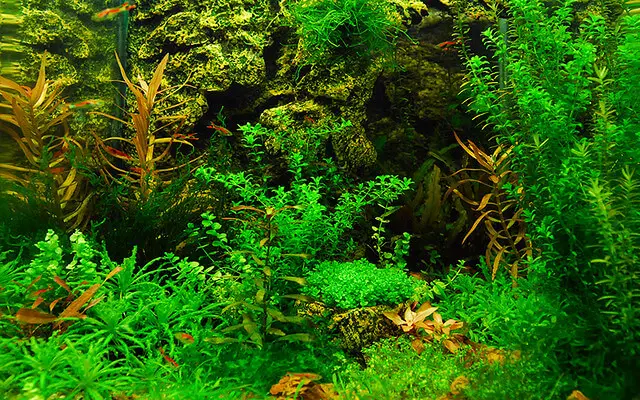Most of the fish, people prefer the pet, are from the sub-tropical region. These fish from the sub-tropical region are natural habitats of warm temperatures. But, contrary to this, there is a lot of fish that don’t require a heater in the aquarium. So, in this article, I have come up with some of the cold water aquarium fish that you can keep in your tank easily.
Fish that can live in cold water are easy to care in comparison to fish of warm water. As we don’t require a heating mechanism in the aquarium, the cost of keeping these fish is also low. The problem of algae also seems to appear less because algae are not likely to develop fast in cold water.
There are tons of fish that survive well in cold water. As a matter of fact, due to easy maintenance, If you monitor the fish carefully and give proper care, the fish may live more than the expected life expectancy.
Tank And Environment Setup
Fish that are habitats of cold water normally grow larger and longer. The fish require a large area to live and play. I recommend you to bring a large tank for the cold water aquarium fish.
The fish are full of life and a joy to watch, so they need space to play and enjoy. I recommend you keep the number of fish in the aquarium minimum as possible.
The fish can thrive in both indoor and outdoor environment, fish living in an outdoor environment generally lives twice the age of fish living in an indoor environment. The temperature should be between 15-20 degrees.
In the outdoor environment, you should avoid the fish from direct exposure to the sun because of the fluctuating temperature.
As the name suggests, the use of heaters is not necessary. For safety and precaution, you can use a thermometer to keep track of the environment inside the aquarium.
The tanks for the cold-water fish are relatively lower as they don’t have heating mechanism included in it.
To bring liveliness and natural feelings, we can add plants and gravel inside the tank. Some fish need these things as compulsory, and some don’t. It’s not necessary to bring something fancy on gravel and vegetation, cheaper gravels and vegetation also bring color and life to it.
Also, check the state of the water filter and the quality of water before introducing the fish to the tank.
Things to Consider Before Introducing the Fish
People usually, without consideration, add new fish to the tank, which generally results in the health and hygiene problem to the fish.
The fish often are on fresh water, so the cleanliness of the water is often an important issue. I suggest you maintain the hygiene of the tank and water level according to the species of fish.
I recommend you calculate the number of fish carefully, according to the capacity of the aquarium and water level.

Other tools like water test kits are recommended to use to make sure the aquarium water is safe for the fish. These test kits are also useful to check the nitrogen cycle process.
You must monitor the water filter and the water cycle too, and the main thing you must do before introducing new fish into the aquarium is to perform a fishless cycle of the aquarium.
You shouldn’t bring all the fish into the aquarium at once. First, keep only one fish for a day to see the condition of fish and aquarium. This step reduces the contamination and hazard to be spread to all the fish.
Cold Water Aquarium Fish List
If you are a beginner level aquarist, prefer fish that can live in cold water (cold water aquarium fish) as they require less care. With mild care, proper food, and right tank mates and substrates, the fish will be a delight to watch.
Fancy Goldfish (Carassius auratus):
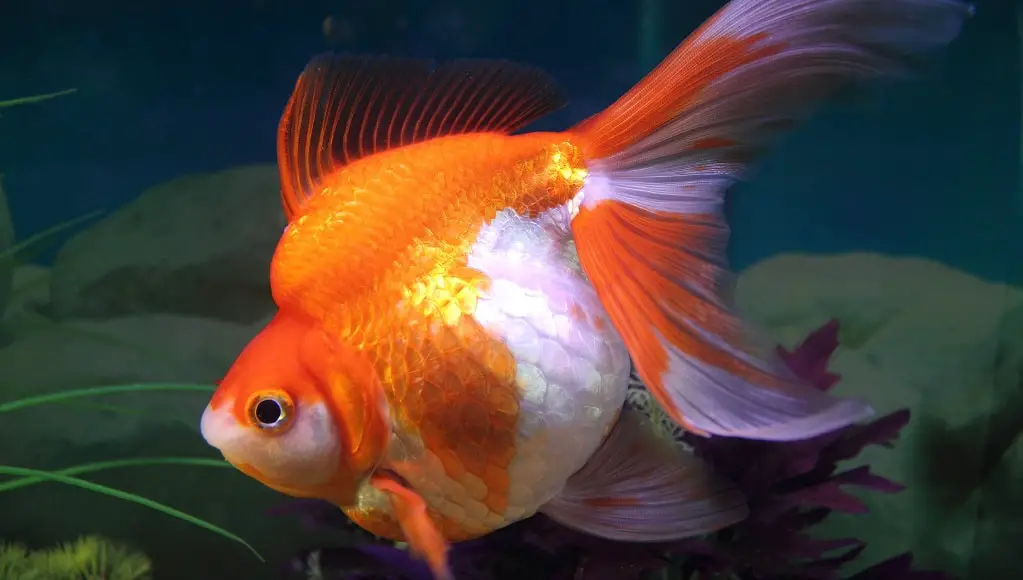
Goldfish is the most common fish that people love to keep in the aquarium. Due to their peace-loving nature and full of life, slow swimming pace, people are attracted to the fancy goldfish.
Unlike other fish, goldfish require attention and care. You should carry out constant monitoring and changing of water, foods, and cleaning activities in the frequent order.
Goldfish grow quite big in size. They grow very fast and reach up to 25cm in size. They require a large tank to live in, 20 gallons(equivalent to 75 liters) is recommended per fish.
Heavy filtration is required, and at least 50% to 60% of the water should be changed weekly. Goldfish are peace-loving pets. You can usually find them in the middle of the tank. It’s better to keep your goldfish away from other fish that are ferocious in nature.
Plants can be added to create a life-like impression around the aquarium, java fern, hornwort, and Anacharis are the best plants to keep in your aquarium to make your goldfish happy.
White Cloud Mountain Minnow (Tanichthysalbonubes):
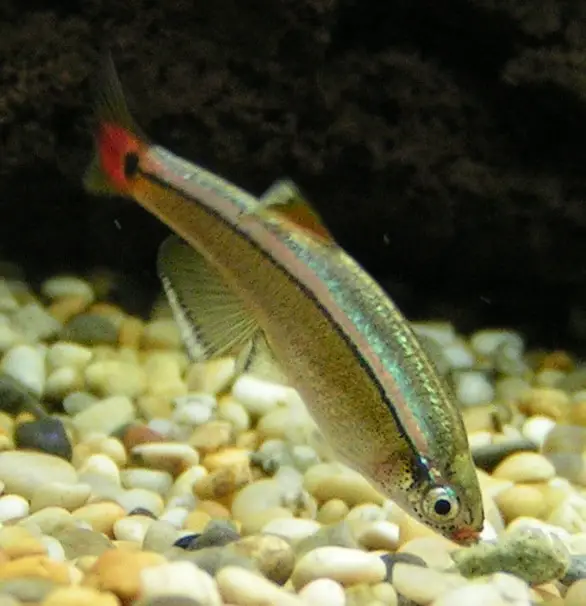
White Cloud Mountain Minnow is a species of fish that is small in size and doesn’t grow more than 1 inch. Mainly there are two varieties of this fish, normal coloration and gold coloration. The gold coloration is popular among the two.
Due to their shining and glittering skin, they are attractive and can bring life in the aquarium. This fish is easy to care and requires moderate care. The nature of the fish is a carnivore, and they are fast swimmers, they are a delight to watch in an aquarium.
Twenty gallons fish tank is the perfect size for beginner aquarist housing 10 of the White Cloud Mountain Minnow. Usually, the most preferred group is 6 to keep these fish in an aquarium. White Cloud Mountain Minnow is not the best tank mates for big fish like goldfish; they could get eaten.
The care for this fish is gentle light filtration and water changes once a week will be enough. The addition of plants, pebbles, and sand substrate will be the best condition for a White Cloud Mountain Minnow to live.
Paradise fish (Macropodusopercularis)
Paradise fish are beautiful colored fish that can be a great addition to your tank. These fish are labyrinth fish, which means they have a labyrinth organ through which they breathe. Unlike other labyrinth fish, they don’t prefer hot temperatures. They are good at 50-70 degrees Fahrenheit.
These fish could grow up to 4 inches long and likes to swim around. Male paradise fish are aggressive and territorial; it is better to give them the space they need; 30 gallons per fish is adequate space for the fish.
You shouldn’t keep two males in the same aquarium. A trio of one male and two females are often preferred. These fish are hyperactive and usually social fish. If you choose the tank mates carefully, they make great tank mates with White Cloud Mountain Minnow.
Floating plants, floating woods, and normal plants make the fish happy to play and enjoy life at aquarium, which would be a great scene to watch.
Rosy Barb
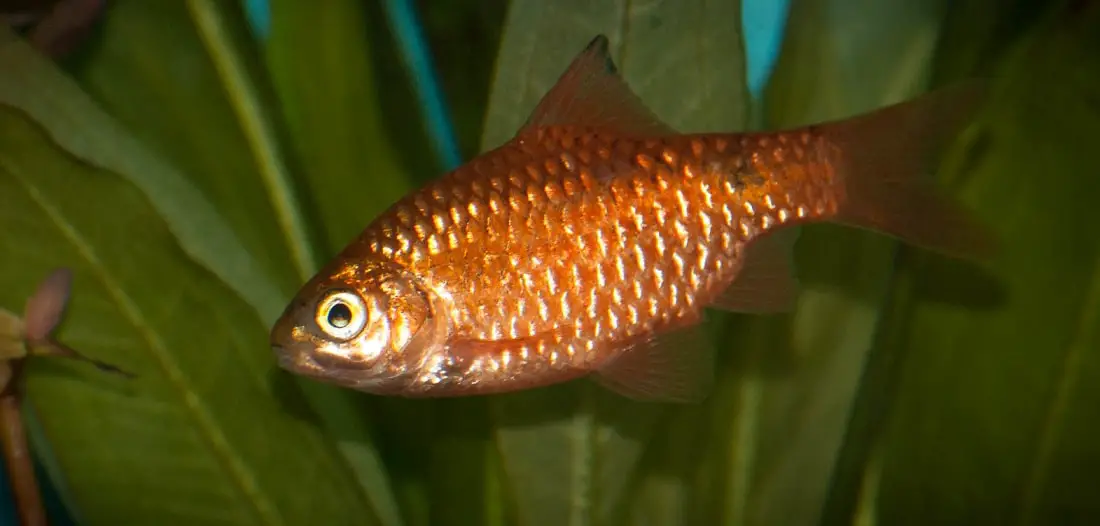
Rosy Barb is one of the best fish that can not only survive but also thrive in a cold aquarium. These fish are larger relative to other fish habitats of cold water. They can grow up to six inches long and are experts recommend to keep them in at least 50 gallons of water.
Rosy Barbs are often considered as social animals and prefer to live in a group. The school of six is said to be the preferred one. These fish are always a delight to watch in their red and pink coloration.
They thrive better in temperature of 65 and 75 degrees Fahrenheit. They always look beautiful in their longfin and look absolute beauty in their swimming. Plants are a great addition to the tank in which the rosy barb is kept. They seem to enjoy the company of the plants and vegetation.
Asian Stone Catfish
Catfish are also called tiny beauty among fish; they are unique in their various behaviors and actions and are a pleasure to watch. The fish are small size and grow up 1.5 inches in size.
These fish don’t have a high range in temperature; they thrive in 60 to 70 degrees of temperature. There are not many fish that are small in size can live in the cold temperature, though being small catfish are extremely beautiful and lovely to watch.
Being a social fish, they prefer to live in schools of three to six fish. Plants, gravel, and sand can be a great addition to the tank to bring the life-like environment around the aquarium.
Weather Loach
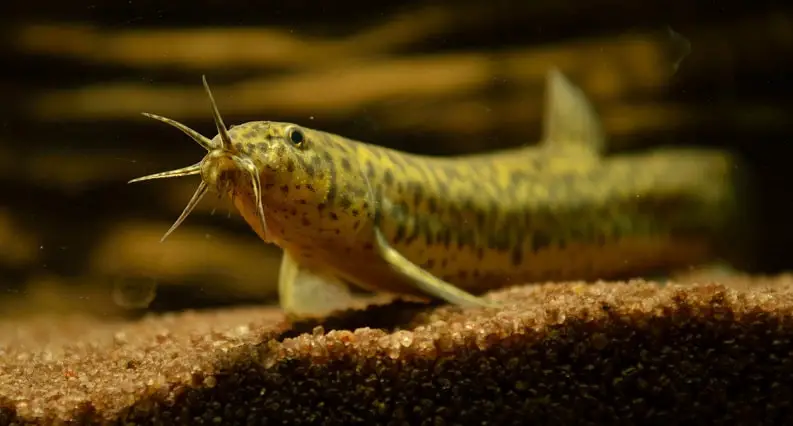
Weather loach is East Asia’s one of the favorite pet despite its size. The unique ability to detect storms and react to weather changes makes these fish stand out from others. They can grow up to 6-10 inches long in size.
Weather loach has the cylindrical body shape long, thick loach fish, which is easy to care and maintain. These fish require no heating mechanism and prefer to stay in the natural temperature of 55-77 degrees.
These beautiful peace-loving creatures mainly have the coloration of variations like yellow, orange, and pinkish. These fish love to stay around gravel and sand substrate, the soft sand substrate with the proper amount of gravel and added plants will be the perfect condition for weather loach.
Pygmy Sunfish
Pygmy Sunfish is one of the most desirable fish to keep in an aquarium. Due to their liveliness and beautiful color contrast, they are one of the most beautiful fish around.
They are relatively small in size and grows up to one and a half to two inches long. Due to their small sizes, they can be kept in an aquarium with small sizes or in another measurement of 5-10 gallons per fish.
It is to be noted that they are very friendly and prefer to live in a school, six fish school is the most desirable choice. You can keep them in the aquarium with a temperature range of 60 to 70 degrees Fahrenheit.
These fish are preferred to be kept in private aquarium due to their size and shy nature. There will always be the danger of getting eaten or low feeding; so, it’s better to keep these fish in the separate aquarium.
Bloodfin tetra (Aphyocharaxanisitsi)
Bloodfin tetra is small size fish that are easy to care and feed because of their un picky nature in eating. These fish are often the size of 2 inches and has a life span of 4-6 years.
The preferred temperature for the bloodfin tetra is 72-78 degrees Fahrenheit. These fish love to be in school. The preferred number in a school is 6. The premium tank size for a bloodfin tetra is 30 gallons.
Due to their beautiful body, i.e., the appearance of silver shining bodies with striking blood-red, they are an absolute treat for the eyes. The basic nature of the fish is that they are surface dwellers, and the male is known to be hunting for females most of the time, and females love to hide. The addition of plants would be a significant enhancement and joy to love the liveliness of the fish.
Care Of The Fish
The cold-water fish is easy to care, but some of these basic steps are to be followed to not create problems and hazards for your fish. Coldwater fish doesn’t seem to like high temperatures, so the temperature level should be between 15-20 degrees, which are optimum levels for the fish that can live in the cold water.
Not only temperature but also Nitrite level should be 0.5ppm, pH level should be between 6.8-7.8, and nitrate level should be less than 40ppm. Despite these things, using water testing kits could also be helpful for aquarium safety.
Water filtration process and recycle time is essential for the fish-loving flow of water. You should carry out the proper cleaning in the frequency of once in a week is to reduce the chance of contamination. The foods to feed the cold water aquarium fish are flakes and pellets. For further customization and expert advice, contact your nearest pet store.
Health Care of The Fish
Health care for the fish is also one of the major topics to be addressed to keep your fish in the optimum state. Continuous monitoring of the fish is very important, which can be easy to figure out the changes in the fish.
Check for any injury in the fish frequently because of the fish may quarrel with other fish in the aquarium or stumble with any equipment and injure themself.
Coldwater fish are prone to fungal infections. Check for the internal parasite. Look out for any physical changes like:- bulging eyes, swelling that could point out the problems that you should address in your fish. If you don’t treat these symptoms quickly, the contamination can be transferred to other fish too.
Conclusion
Bringing into conclusion, fish that can live in cold water require a medium level of care. The major works to do to care for the cold water aquarium fish are:- feed 2-3 times a day, changing 25% of the water weekly, keeping the tank temperature 16-24 degrees Celsius, clean water in the tank, proper lighting, and plants and substrate matching the fish. If followed these easy steps carefully, the fish will grow to be healthy and live its full life.
Reference
Image Credit
- https://www.flickr.com/photos/15460736@N06/8400026189
- https://upload.wikimedia.org/wikipedia/commons/1/18/White_Cloud_Mountain_Minnow_2.webp
- https://www.flickr.com/photos/markhanford/8385440708
- https://upload.wikimedia.org/wikipedia/commons/8/8c/Weather_loach.webp




